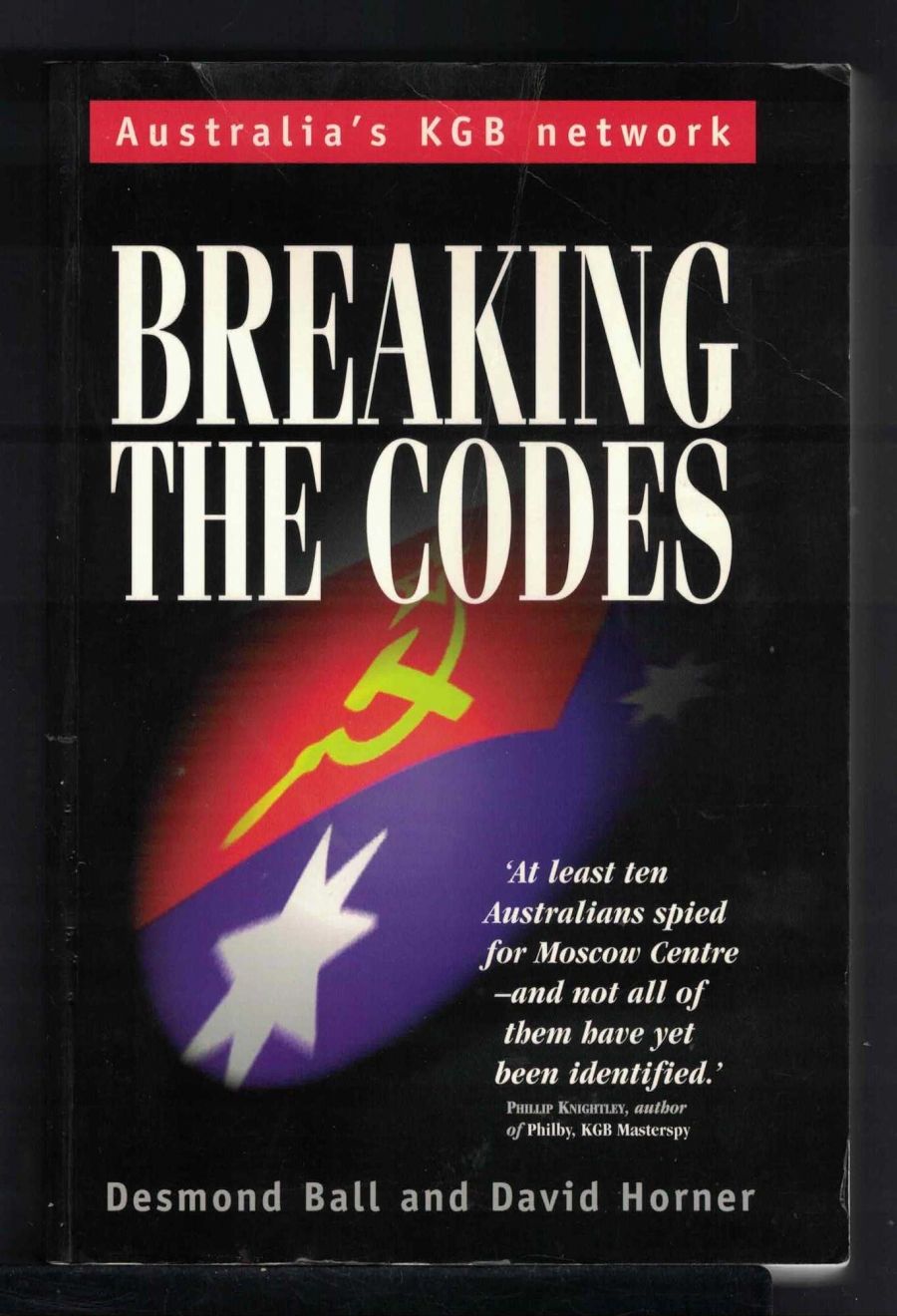
- Free Article: No
- Contents Category: History
- Review Article: Yes
- Article Title: The Cold War
- Online Only: No
- Custom Highlight Text:
Breaking The Codes was published last August. The time that has subsequently elapsed makes it possible to comment not only on the book itself but also on some aspects of its reception.
- Book 1 Title: Breaking the Codes
- Book 1 Subtitle: Australia’s KGB Network 1944-1950
- Book 1 Biblio: Allen & Unwin, $29.95 pb, 469 pp
In the 1970s and 1980s, Ball and Horner, working in their respective fields, became aware of allegations of Soviet espionage in Australia in the 1940s and of the British and American efforts to intercepts and decrypt the KGB’s signals traffic at the time. This book is the result decision to pool their efforts. At its heart is the product of Operation Venona, the Anglo-American signals intelligence operation which partially succeed in breaking the Soviet codes from 1943 onwards, as it concerned Australia. It shows unequivocally that there was indeed a spy ring in Australia, mostly comprising Australian communists or their close associates, who were supplying sensitive information to the Soviet Union. The book provides, in massive and relentless detail, the evidence provided by the Venona operation, placed in the context of the operations of the intelligence and counter-intelligence organisations, By sheer weight of information, it overwhelmingly gives the lie to the ‘Petrov fraud’ school of thought. (To say this, of course, is not to say that everything said by that school’s opponents is accurate or justified.)
Some reviews have criticised the book’s style. It is certainly no light read, nor do authors show a novelist’s touch in revealing the mind of the protagonists, whether spy or counter-spy. That misses the point. The book is written in a dispassionate, fact-laden style for good reason. Like the report of an official enquiry into a controversial question, it plays down the interpretation and emphasises the evidence, making clear where that evidence is incomplete or inconclusive.
Given the origins of the book it was perhaps inevitable that it should have included discussion of possible Soviet military espionage within Australia during the war. The authors speculate that this may even have cost hundreds of Australian lives at Tarakan and Balikpapan. Although these sections drew headlines when the book was released, it may perhaps have been unwise for the authors to include this topic in the book, for the evidence is much more open to rival interpretations. It might have been better to write a separate monograph on military espionage during the war (on which it is possible that further information may emerge), leaving this book to be as definitive an account as one can expect of the political espionage of the late 1940s.
With that minor reservation, this book must be seen as a massive contribution to Australian history. It is likely to be the standard reference for years to come. The former protester and the former army officer have jointly produced a book which overpowers much of the Petrov-related polemics of more than four decades. It is essential reading for anyone who seeks to understand the public and private politics of Australia’s Cold War.


Comments powered by CComment